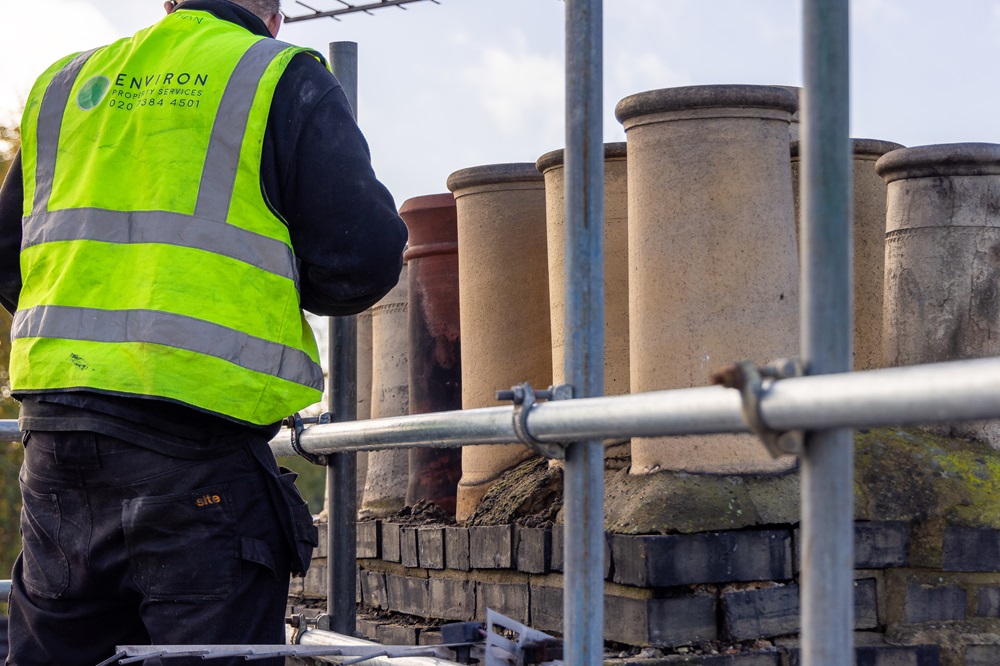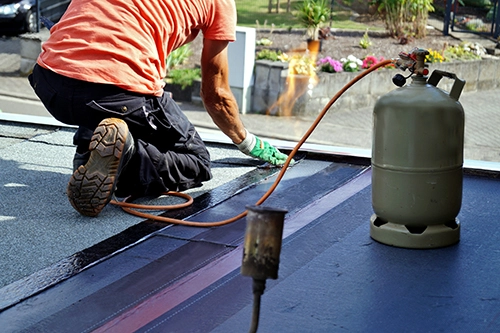- About Us
- Services
- Blog
- Contact
Need a quote?
Chimney repairs are crucial for your home. Chimneys start to wear and tear over time which can lead to dangerous leaks. When bricks start to deteriorate this can cause decay around your chimney and put your health at risk as gases aren't passing smoothly.




Taking pride in your chimney repair process through frequent maintenance will make your home safer and help avoid major chimney problems down the line.
To keep your home safe, regular repairs are a must as chimneys can release dangerous gases. Therefore, you can decrease the risk of catastrophic events like your chimney being set on fire or collapsing from the accumulation of mould.
Now in England alone, there are 7000 chimney fires every year but most of them could have been prevented through regular repairs and frequent cleaning. After all, the more you use your chimney the more decay starts to build.
The build-up of decay can have a significant impact on your chimney's performance. The decay can cause smoke to be trapped and it can divert back into the home, which can cause serious consequences.
Maintaining the safety of your home is vital. It doesn’t matter if you live alone or have a family, if you neglect the condition of your chimney it can put all occupants at risk. Chimneys produce fumes that can negatively affect your health and can affect the atmosphere within certain areas of your property.
Investing in chimney repairs can prevent any significant damage to your home by identifying any obstructions like clogs, tree debris and even animal nests starting to grow in your chimney around the summertime. All of these issues can release carbon monoxide into your home if you avoid a simple chimney repair.
During the winter, it tends to get colder in London and maintaining your chimney will improve the sustainability and efficiency of your fireplace.
If you need a chimney repair or you would like further information about the service we provide, do not hesitate to contact us on 020 3971 1901 or send an email to info@environroofingservices.co.uk. Our highly reputable company will be happy to offer a free quote.
It depends on the construction, but the minimum weight a flat roof must be capable of bearing is 300lbs. This refers to a concentrated weight where a load is positioned on just one area of the roof. So, for example, a commercial flat roof can approximately support a 300lb HVAC unit in a 2.5×2.5ft single space.
If you opt for a flat roof anywhere on your property, remember that it comes with a need for proper maintenance. Low-slope roofing London-wide should be checked every six months or so, or after spells of bad weather, to spot any signs of damage. No matter how small, these should be addressed before they escalate. Remove any debris (leaves, twigs and so on) regularly to avoid these blocking the gutters and allowing water to pool and stand on the roof.
If there are trees in the close vicinity, keep them cut back to reduce the amount of foliage that falls on your flat roof. And check internally for signs of moisture, dampness or water damage on a regular basis. Spotting problems early means resolving them will be cheaper in the long run.

Building a flat roof can be done in three ways. The simplest and most cost-effective choice for levelled roofing London-wide is to construct a warm roof where a roofing membrane is placed over the insulation that keeps the timber structure warm. Another option is to create a cold roof where insulation is positioned between the rafters under the ply roof covering. This is commonly applied to flat-roofed extensions.
The third method is the hybrid roof that contains diverse elements. Their designs require a gap of ventilation above a warm roof to prevent excess moisture within the roof structure.
If you’re looking for flat roofing local contractors, don’t just select the first firm you come across. Find a roofing company that’s been in business for a while and can demonstrate a good track record in installing, repairing, and replacing flat roofs specifically. Ask for recommendations from your own network or from a local trade association. If you need refurbishment work done to 50% or more of your roof, you’ll need a roofing contractor who can self-certify their work under the Competent Person Scheme. Otherwise, the Building Control department at your local authority will need to approve the job before it begins.
Ask whether they are covered by liability insurance and how long they’ll guarantee the work they will carry out. And never just opt for the cheapest quote unless you’re quite sure they’re the best company for the job. You can’t afford to compromise on your roof as the structural integrity of your property depends on it.
Ensuring your flat roof will comply with building regulations before installation can save property owners time, money and stress. First, the roof must have a slope of around 1:80, with water draining away to one or two roof edges. Waterproofing must be extended up to the adjacent walls with at least 150 mm from the surface of the roof.
Contractors must install ventilation in cold roofs. For warm roofs, the deck must be bonded with a VCL. The roof should have the capacity to withstand strong winds and be sturdy enough to take an individual’s weight. Finally, check whether planning permission is needed. Typically, this is only required if you live in a conservation area or a listed building, or are making significant changes to an existing roof.
If you’re looking for top roofing solutions at competitive rates, check out our range of roofing services at Environ Roofing Company London. To get started, call one of our representatives today!

